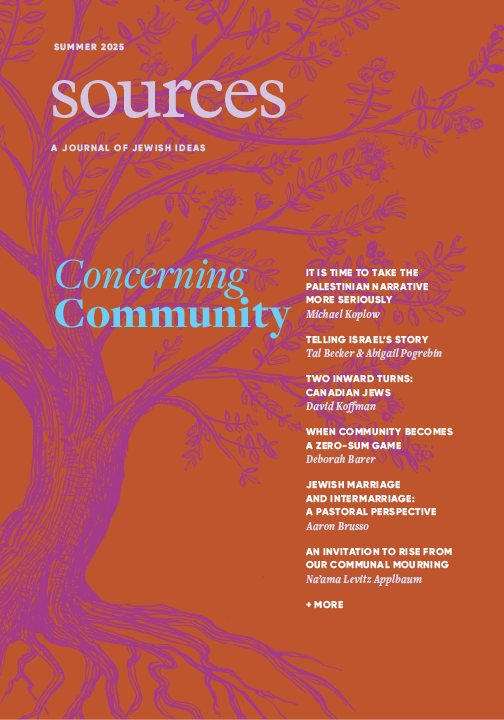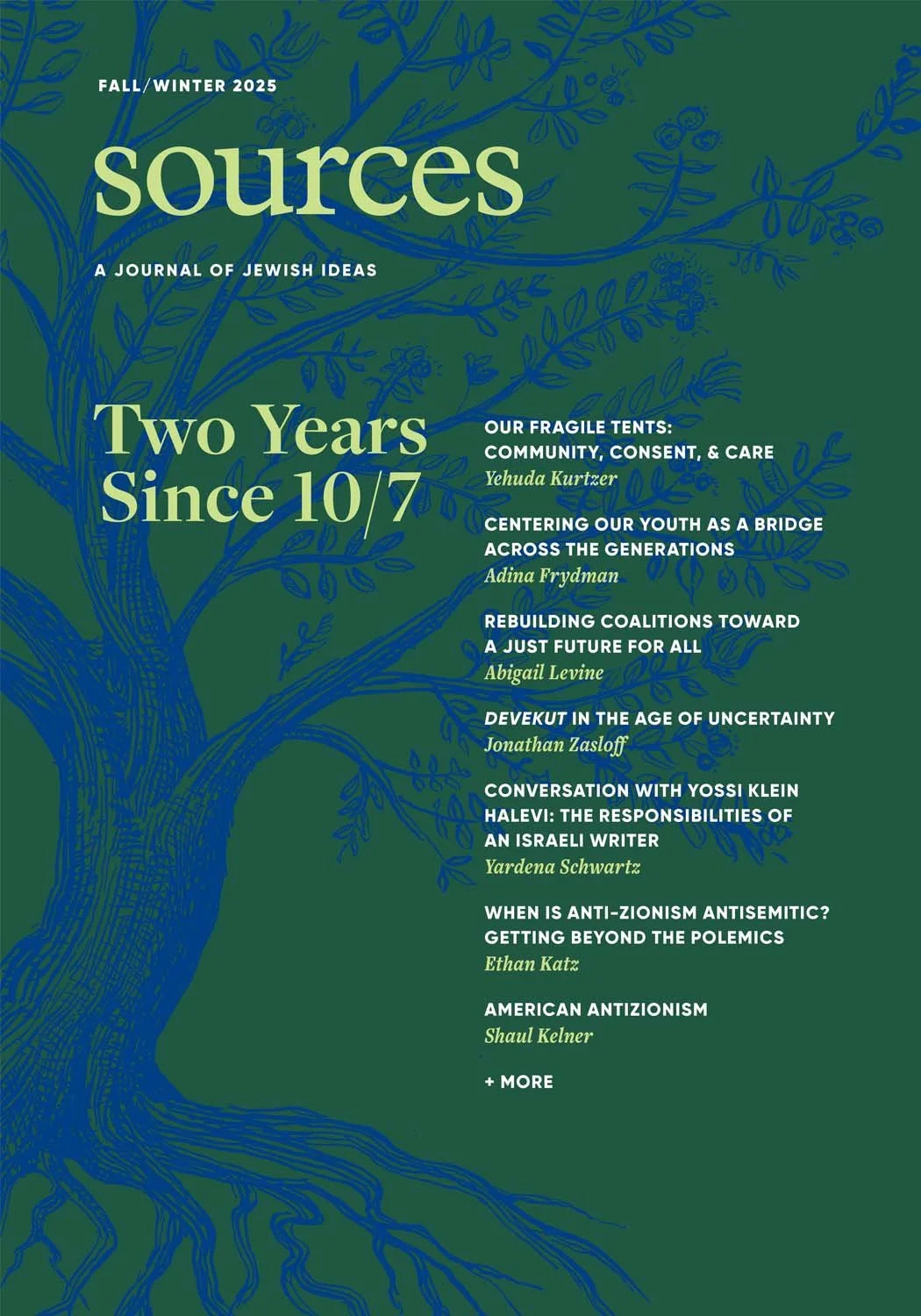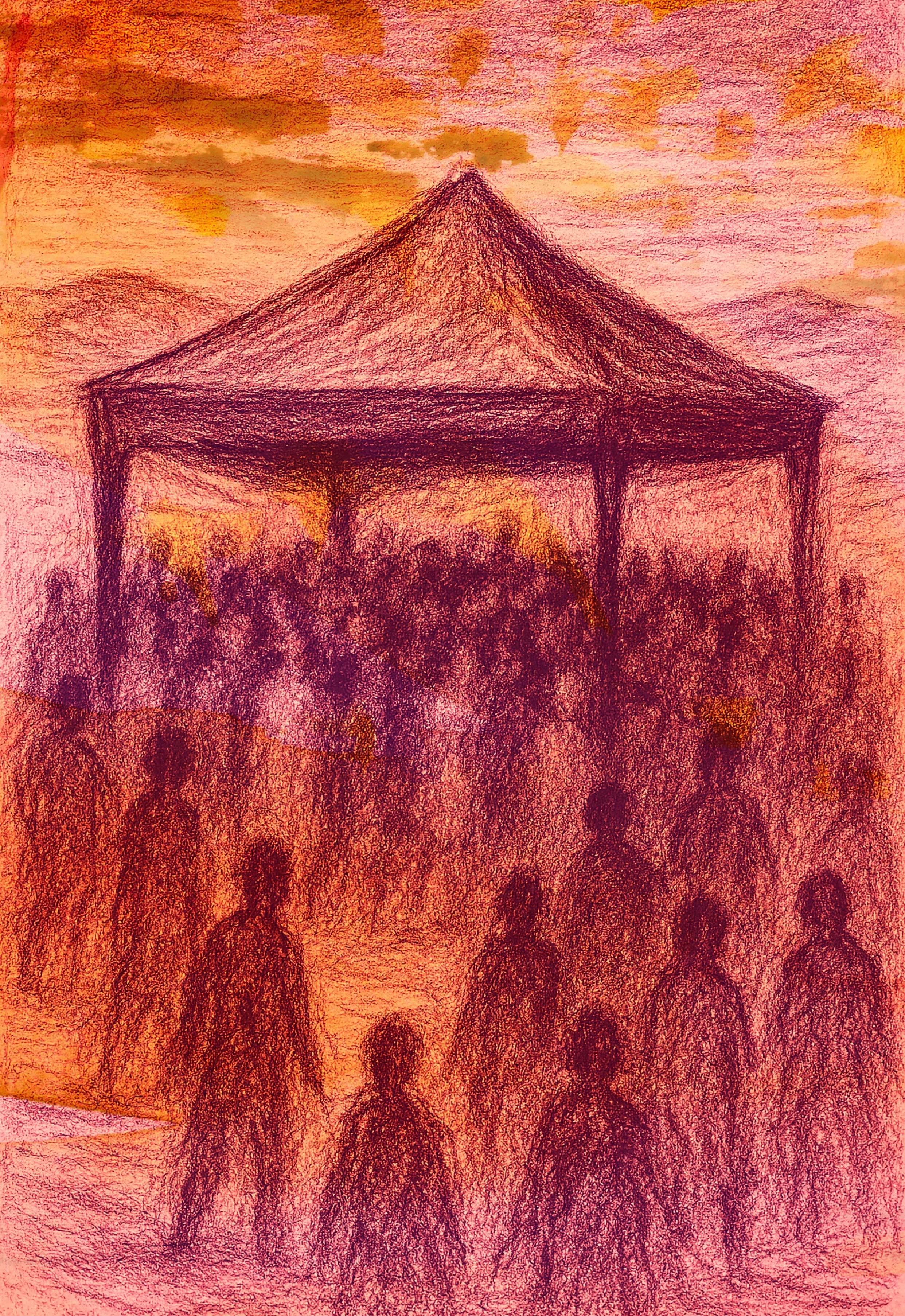Concerning Community
From The Editor
Dear Friends,
Whether we’re biologists, political philosophers, or simply trying to make our way in the world, we know that the need to connect with others is part of the human condition. Little surprise, then, that this idea appears over and over again in Jewish sources, from God’s observation that “it is not good for the human to be alone” (Genesis 2:18) to Hillel’s “if I am only for myself, who am I?” (Pirkei Avot 1:14) to Martin Buber’s insistence in I and Thou, first published in German in 1923, that human beings find meaning in dialogue with others.
Judaism’s emphasis on community does not stop at the conceptual level. Jewish ritual practice reinforces the necessity of community by insisting it is better to pray with a minyan of at least ten Jews than alone. Jewish history is a history of communities. And yet, despite (or perhaps because of) these realities, building and sustaining community are central concerns in Jewish life today.
The most recent chapter in the story of our collective anxiety about community began with the response to October 7. In the immediate aftermath of Hamas’s attack on southern Israel that day, fear and grief led many Jews to lean into (or even just to join) their local communal organizations in ways they had not before—an effect we called “the surge.” There was a profound sense of unity among Jews around the world that many of us had not felt before.
But with time, as Israel’s war with Hamas continued and as antisemitism and anti-Zionism reared their ugly heads in many places, that unity was ruptured by gaping fissures, some old and some new. Now, on local, national, and global levels, many of us are asking: who is part of the Jewish community and who is not?
This contemporary debate about belonging is a version of age-old arguments about who is a Jew. But I think that more than anything, when we ask who is in and who is out, we are arguing about values, views, and representation. How often do we hear someone speak “on behalf of the Jews” or “in the name of the Jewish community” and find ourselves disagreeing as Jews? “That’s not what Jews think or what the Jewish community believes or wants,” we might say to ourselves or to our friends. Further consideration of such reactions can lead us to retreat to smaller claims—“that’s not what most Jews think”; “that’s not what the Jews I know think”; or the simplest, “that’s not what I think”—or to expand to larger ones—“that’s not what Jews should think.”
We first chose “Concerning Community” as the theme for this issue of Sources: A Journal of Jewish Ideas because of the political, religious, and other divisions straining the limits of Jewish community in North America and pushing so many Jewish leaders to draw and emphasize new red lines designating who can and cannot enter what we like to think of as our “big tent.” These conversations continue, and you’ll find aspects of them in some of the pieces in this issue. But some of the other pieces that appear here suggest that we might be ready to begin repairing fissures and rebuilding internal Jewish alliances, even if we are not entirely sure how to do so. We are starting to remember that our diversity is one of our greatest strengths. At the same time, changing views of the war and of antisemitism are straining the relationship between our two largest Jewish communities, North American Jewry and Israeli Jews, and this too demands our attention.
This issue of Sources is divided into three sections, each representing an aspect of Jewish community. The first, The Stories We Tell, is about the communal narratives we rely on to tell us who we were, who we are, and who we want to be. It opens with two provocative pieces about the relationship between the experiences of Israelis, Palestinians, and world Jewry that emerged from work undertaken at the Kogod Research Center over the last year. Michael Koplow argues in his piece that Zionists must incorporate the Palestinian experience into their understanding of the State of Israel. This is necessary, he explains, for us to be taken seriously in spaces ranging from the halls of Congress to the dinner table. In the next piece, Joshua Levisohn considers how we might do this and the political positions it might lead us to.
These pieces are followed by a wide-ranging conversation between Tal Becker and Abigail Pogrebin on what it means for the State of Israel to be part of a community of nations. The section concludes with David S. Koffman’s rich analysis of the history of Canadian Jewry and his prescriptions for this community’s future; his endorsement of political centrism is particularly thought-provoking.
The issue’s second section, Boundaries, tackles some of the most important questions we face today. Aaron Brusso reflects in his piece on what he has learned from intermarried families in his congregation and the pastoral approach he now takes when he is asked to officiate at a wedding between a Jew and a non-Jew. Deborah Barer turns to the Talmud, where she examines a text in which the rabbis speak about non-rabbinic Jews in extreme terms, comparing them to vermin. This ancient case of Othering becomes, in her deft reading, a prompt for reflection on how we talk today about those Jews with whom we disagree. This piece is followed by Benjamin Berger’s appeal for a renewal of pluralism, especially (but not only) in Jewish spaces on college campuses. He asks us to be wary of the pleasure we may get from rejecting others.
In his piece, Guy Austrian presents the concept of derekh gedilatan, “in the way that they grow,” as a means of thinking productively about the tension between a community’s stated commitment to Jewish practice and the reality that its members do not all live up to that commitment. And then, in the section’s final piece, Daniel B. Schwartz takes us back to 17th century Amsterdam to consider the Jewish community’s herem against Baruch Spinoza, and then forward to 20th and 21st century attempts to rehabilitate the philosopher and welcome him back to the fold. Schwartz argues against these attempts, lest they distract us from the right of (and need for) all communities to set and enforce boundaries.
The issue’s final section, Across an Ocean, brings together four pieces by Israeli authors with strong ties to North American Jewry. The section opens with Na’ama Levitz Applbaum’s impassioned plea to diaspora Jews to help Israelis move forward from October 7, much as a community helps mourners to rise at the end of shiva. Tomer Persico draws inspiration from Reconstruction, the period after the American Civil War when the country recommitted itself to its ideals of freedom and equality. The State of Israel, he argues, needs a similar sort of rebirth, if it is to live up to the promises made in its 1948 Declaration of Independence.
Writing not long before she returns to Jerusalem after four years living in Berkeley, Masua Sagiv compares patterns of American Jewish optimism with Israeli tendencies toward pessimism, showing what the two groups can learn from one another about hope. Finally, Leon A. Morris examines the terms we use for talking about ourselves as a collective. Drawing on biblical and rabbinic texts, he makes a case for Knesset Yisrael, a label capturing religious, national, and other aspects of Jewish identity.
In considering all of these—the individual pieces as well as the mosaic they create together—the challenge of Jewish community seems to me to be the need to manage the diversity of Jewish ideas, practices, and experiences. We commit to doing this over and over because we agree on one simple point: being Jewish is no more a solo pursuit than being human is. Being in community can be hard, but it is where we find the mutual support we need—not only to survive but to develop a sense of meaning and purpose.
As always, I look forward to hearing your thoughts.
Claire E. Sufrin



